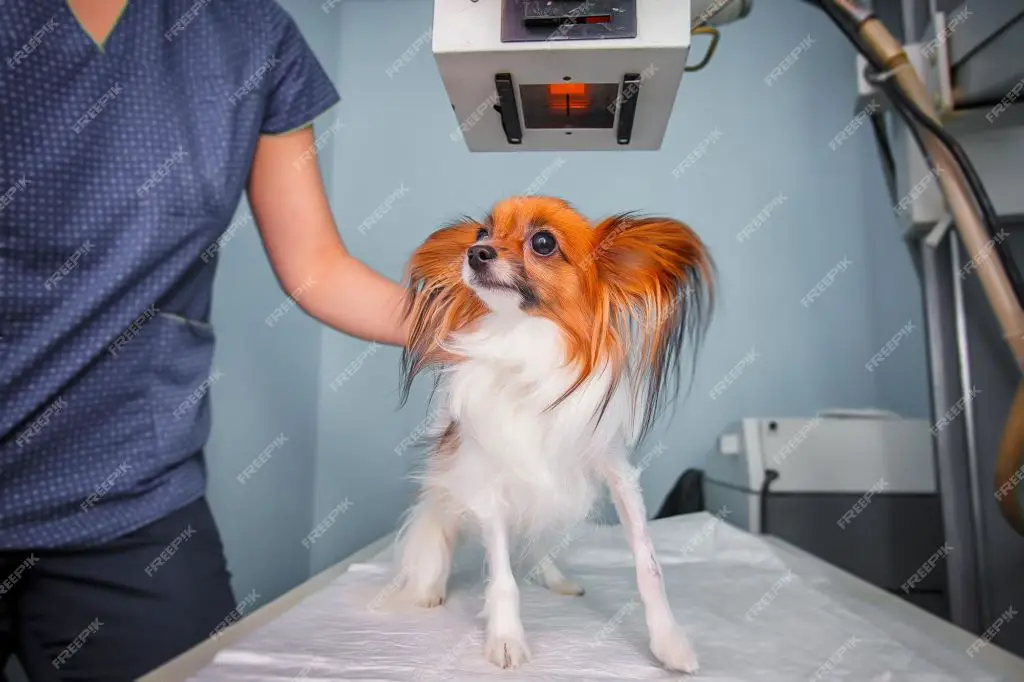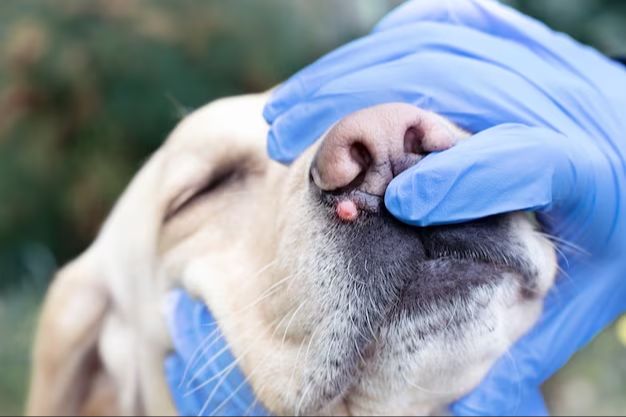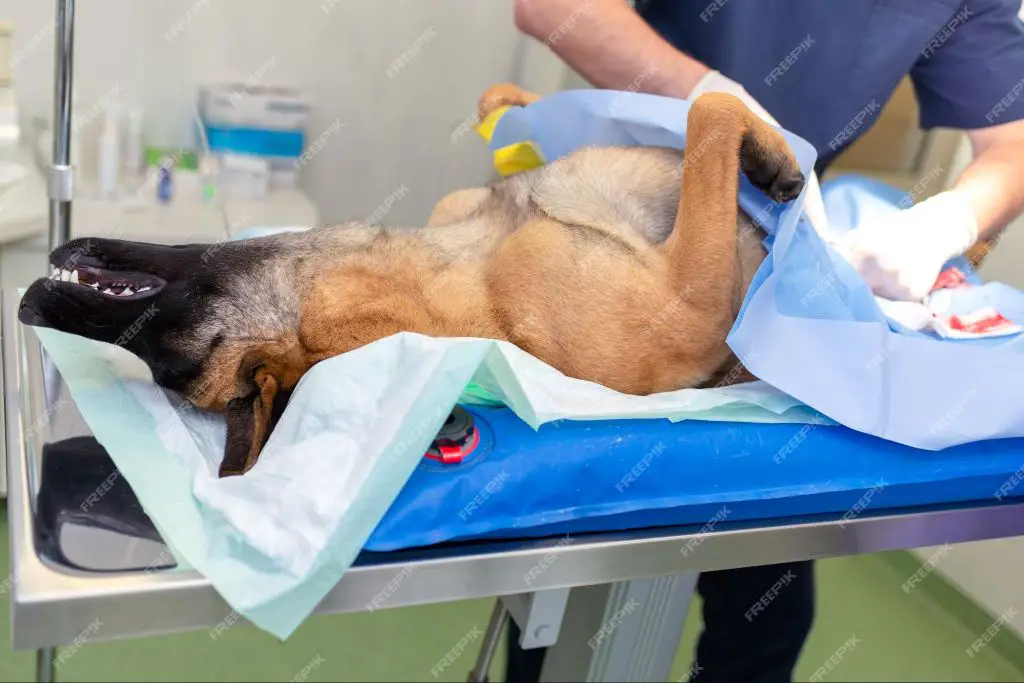Introduction
Contagious cancers are cancers that are spread directly between individuals through direct contact or cell transfer. While contagious cancers are rare, there are some cancers that can spread between animals of the same species directly through transmission of living cancer cells. In dogs, there are two known contagious cancers – Canine Transmissible Venereal Tumor and Sticker’s Sarcoma. A contagious cancer is spread through the transfer of living cancer cells between dogs. This is unlike most other cancers, which cannot usually spread between individuals. Contagious cancers pose unique risks and challenges for dogs and veterinarians.
Canine Transmissible Venereal Tumor (CTVT)
Canine transmissible venereal tumor (CTVT) is one of the few known naturally occurring transmissible cancers. It is a contagious venereal tumor that is spread during mating. The cancer cells themselves are transmitted from dog to dog through sexual contact and cell transplantation. CTVT initially manifests as genital tumors in both male and female dogs that can grow rapidly and be transmitted to other dogs during coitus or other close physical contact.

CTVT is one of the most prevalent cancers diagnosed in free-roaming dogs worldwide. The prevalence varies geographically, with higher rates in tropical and subtropical regions. CTVT is uncommon in countries with more confined dog populations. While CTVT occurs in both male and female dogs, it is more commonly seen in females. The tumors initially develop on the external genitalia and can eventually metastasize to other areas of the body.
Although highly transmissible, CTVT is one of the few spontaneously regressive tumors known. Within 1 to 6 months after initial transmission, the tumor burden either stabilizes or gradually regresses in most affected dogs. Spontaneous regression is mediated by an effective immune response against the tumor cells. However, CTVT can occasionally become fatal if the tumors continue growing unabated and vital organs are impaired.
Sticker’s Sarcoma
Sticker’s sarcoma, also known as canine transmissible venereal tumor, is a type of contagious cancer that affects dogs. It is transmitted between dogs through the transfer of living cancer cells, primarily during mating or other close physical contact between dogs.
Sticker’s sarcoma manifests as tumors on the external genitalia of dogs, including the penis and vulva. The tumors can range in size from barely visible to several inches across. They may ulcerate and bleed in some cases. If left untreated, Sticker’s sarcoma can metastasize and spread to other areas of the body.
Sticker’s sarcoma is one of the most common cancers diagnosed in dogs worldwide. However, its prevalence varies greatly depending on geographic location. It is considered endemic in tropical and subtropical regions, especially in developing areas with free-roaming dog populations. Sticker’s sarcoma is less common in temperate climates, but sporadic cases do occur.
Other Contagious Cancers
There are a few other contagious cancers that are quite rare in dogs. Devil facial tumor disease is a transmissible cancer that only affects Tasmanian devils. When Tasmanian devils bite each other, cells from the cancer can spread between them. There is also recent evidence that a contagious leukemia might occur in the endangered San Nicolas island fox. However, these contagious cancers have not been reported to spread to dogs.
Transmission
Contagious cancers are transmitted from dog to dog through direct contact and transfer of living cancer cells. The transmission requires close contact that allows cancer cells to spread from one dog’s body to another. These contagious cancers cannot be spread through air, surfaces, or casual interaction between dogs.

One of the most common routes of transmission is through mating and sexual contact. When an affected male dog mates with a female dog, the cancer cells from the male’s genital area can spread to the female’s genital tract. Prolonged and intensive sexual contact provides an opportunity for the cancer cells to transfer.
Other high-risk activities that allow transmission include biting, licking wounds or bleeding cuts, and blood transfusions between dogs. Activities where saliva and blood may be exchanged provide a way for cancer cells to spread from one dog to another. Wounds or bleeding facilitates entry of the cancer cells into the recipient dog’s body.
Mother to pup transmission is also possible if the mother dog is affected. The cancer cells may spread to her offspring in utero or through breastfeeding. This vertical transmission from dam to puppies maintains the cancer cell line to new generations.
In rare cases, behaviors like mutual grooming may also transmit contagious cancers if there is a high degree of contact over wounds or mucous membranes. However, casual interactions are very unlikely to spread contagious cancers between dogs.
Symptoms
The symptoms of contagious cancers in dogs will vary depending on the specific type of cancer. However, there are some common signs to look out for:
Lumps or masses: This is one of the most obvious potential indicators of cancer. Lumps may appear on the skin or internally. External lumps are often easier to identify by sight or feel. Internal lumps may go undetected until they grow large enough to impede organ function.
Lesions: Lesions describe areas where tissue has been damaged. They can appear as ulcers, sores, or other abnormalities on the skin or mucous membranes. Lesions caused by contagious cancers may appear suddenly and then grow rapidly.
Bleeding or discharge: Abnormal bleeding or discharge from the nose, mouth, rectum or genitals can signal cancer. The discharge may be bloody, mucus-like, or purulent depending on the type and location of the cancer.
Loss of appetite and weight loss: Cancer can suppress appetite. As tumors steal nutrients from the body, weight loss may follow. These are nonspecific symptoms that can have other causes, but warrant investigation given other clinical signs.
Lameness or stiffness: Bone cancer or swollen lymph nodes can make dogs reluctant to move or hamper mobility. They may limp, have difficulty standing up or going up stairs, or show changed gait patterns.
Diagnosis
Veterinarians will perform a thorough physical exam on dogs suspected of having a contagious cancer. They will check for lumps, bumps, or other abnormalities on the skin and look for signs of illness. An extensive medical history will also be taken to understand potential exposure risks.
If a contagious cancer is suspected, the vet will recommend diagnostic tests to confirm. For CTVT, they may take a small tissue sample of the tumor to examine under a microscope. Sticker’s sarcoma is usually diagnosed through a biopsy as well. Other tests like bloodwork, urinalysis, and imaging scans may be performed to assess the spread of the cancer and look for metastases.

Molecular and cytological analysis can differentiate CTVT cells from normal dog cells. The presence of unique cancer cell markers is a key diagnostic indicator. The vet may also check for the virus associated with Sticker’s sarcoma to confirm the diagnosis.
In many cases, confirmation from a veterinary pathologist is recommended. They can thoroughly analyze any biopsied tissue samples to determine if abnormal cancer cells are present.
While awaiting all diagnostic results, dogs will be closely monitored and treated for any symptoms. Fast and accurate diagnosis allows vets to quickly start treatment and improve prognosis.
Treatment
There are several treatment options available for contagious cancers in dogs. The main goals of treatment are to eliminate or control the cancer, prevent spread to other dogs, and manage symptoms to improve quality of life.
For canine transmissible venereal tumor (CTVT), treatment usually consists of chemotherapy drugs like vincristine sulfate or immunotherapy drugs. Surgery may also be done to remove accessible tumors. Radiation therapy is sometimes used for stubborn tumors. With treatment, most dogs are cured of CTVT.
Treatment for Sticker’s sarcoma involves surgically removing the tumor(s) and affected tissue. This is usually curative if caught early before metastasis. Chemotherapy may be recommended after surgery to help kill any remaining cancer cells.
Regardless of cancer type, any infected or exposed dogs should be isolated during treatment to prevent further transmission. Good hygiene practices should be followed to avoid contamination. Supportive care like pain medication may be given as needed to keep dogs comfortable.
Working closely with your veterinarian is important to determine the best treatment plan for your dog’s specific condition and needs. With appropriate treatment, many dogs with contagious cancers can recover and return to a good quality of life.
Prevention
Though contagious cancers are rare in dogs, pet owners should be aware of ways to prevent the spread of these diseases. Here are some tips for prevention:
-
Spay/neuter your dog to reduce exposure risk for sexually transmitted cancers like CTVT.
-
Avoid contact between intact male and female dogs to prevent venereal transmission.
-
Isolate dogs diagnosed with contagious cancers to prevent spread through licking/biting.
-
Disinfect any wounds on your dog promptly and keep bandaged.
-
Avoid dog parks, kennels or multi-dog households with unknown vaccine/health history.
-
Ask your vet to inspect your dog’s mouth, genitals, and skin for any abnormal growths.
-
Keep your dog up-to-date on vaccines, parasite prevention, and vet exams for early detection.

While contagious cancers are rare, being aware of the risks and taking preventative measures can help protect your dog’s health.
Conclusion
In summary, while most cancers in dogs are not contagious, there are a few that can spread between canines. The most common contagious cancer is Canine Transmissible Venereal Tumor (CTVT), which spreads through reproductive contact. Sticker’s Sarcoma, though less common, can also be transmitted through licking or biting. Being aware of the possibility of contagious cancers in dogs allows owners and veterinarians to diagnose and treat them more rapidly. Catching these diseases early is important to improve outcomes and reduce transmission. Though the risks are low, routine screening and prevention methods like spay/neuter can further protect dogs from contracting contagious cancers.